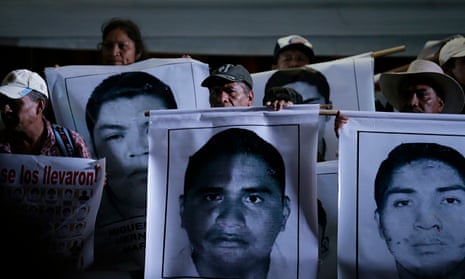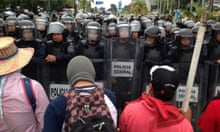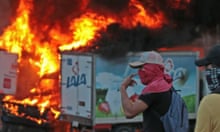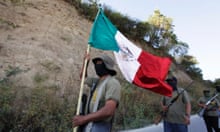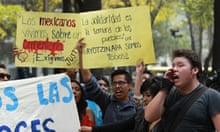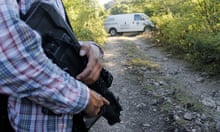Amid growing public fury over the failure of Mexican authorities to locate 43 students who disappeared nearly a month ago, the government has identified a local mayor and his wife as the probable masterminds of the crime.
Attorney general Jesús Murillo said there was clear evidence that José Luis Abarca, the mayor of the southern city of Iguala, ordered local police to target the students because he feared they would disrupt a speech by his wife. He said the police then handed the students over to a local drug trafficking group, known as Guerreros Unidos, who took them to an area where mass graves have since been discovered.
“This is the only line of investigation,” Murillo said, adding that it emerged from the interrogation of dozens of police officers and cartel members who have been detained since the students disappeared on 26 September.
The leader of Guerreros Unidos, Sidronio Casarrubias, was arrested last week and told police that the mayor’s wife María de los Angeles Pineda was the group’s “main operator within city hall”, Murillo said. Abarca and Pineda, who was preparing to stand for election next year to replace her husband as mayor, are both now on the run.
The events in Iguala have underlined the degree to which local politics in the state of Guerrero has become intertwined with the drug trafficking underworld – as it is in drug war hotspots around the country.
According to a high level federal official familiar with the case, Guerreros Unidos are one of a handful of small trafficking organisations operating in the state focused on controlling opium paste stockpiles made from poppies grown in the surrounding mountains. The official said they sell the paste to larger trafficking organisations supplying the US market, particularly the Sinaloa cartel.
Mexican production of opium poppies has grown dramatically in response to the decriminalisation of marijuana in some US states that is giving consumers access to higher quality legal cannabis, the official said.
Iguala, he said, was “consolidated territory” of Guerreros Unidos, though the group was always looking out for attempted incursions by rivals.
The students, from a famously radical teacher training college called Ayotzinapa 130 kilometers away, apparently stumbled into this explosive mix upon arriving in Iguala after dark on 26 September and commandeering a couple of buses to use in protests later on.
In June 2013, students from the college had participated in a violent occupation of city hall in protest at the murder of a local activist that was widely blamed on the mayor.
Attorney general Murillo said their return caused Pineda to believe they would disrupt a speech she was planning to make. He said the order for police to attack the students came directly from the mayor.
The resulting armed assault by police on the buses carrying the students resulted in the death of six people, as well as the arrests of dozens who, Murillo said, were later transferred to a white truck under the control of a Guerreros Unidos member nicknamed ‘El Gil’ who drove them to a hill on the outskirts of the city.
The gang’s leader, Casarrubios, told investigators that ‘El Gil’ texted him saying that the students were members of a rival criminal group. “With that information, Sidronio Casarrubios okayed the actions in order to defend his area of influence in Iguala,” Murillo said.
The events in Iguala have prompted protests and vigils around the country and abroad, exploding the government’s earlier claims to be bringing the Mexican drug wars under control with the help of improved intelligence and coordination between different levels of government.
Much of the anger has focused on the government’s lacklustre response to multiple signs of what was going on in Iguala, now seen as a symbol of criminal control of elected authorities in conflict areas across the country.
The evidence in Iguala included an increase of the number of people going missing in Iguala in the last couple of years, some of them allegedly at checkpoints set up by the police and Guerreros Unidos at the entrance to the city.
